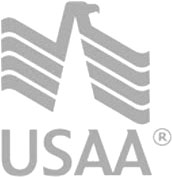Being self-employed has many benefits, but one thing you don't get is an employer-sponsored 401(k) plan with matching funds, or a company-funded pension. So if you want any sort of tax-advantaged retirement savings, you're going to have to pick a plan and start directing funds toward it yourself.
Here are some options to consider:
Roth IRA - Roth IRAs aren't specifically for self-employed people, but that doesn't mean you should forget about them. A Roth IRA is a great retirement savings vehicle for many people, including the self-employed. Your contributions are made after you've paid income taxes, but your earnings grow and are distributed tax-free. Income limitations on Roth IRAs are applicable to your Modified Adjusted Gross Income, so even if your gross income is high, you may still be able to contribute to a Roth after you take your deductions. Learn all about Roth IRAs in IRS Publication 590.
SEP-IRA - A Simplified Employee Pension - Individual Retirement Accounts, more commonly known as a SEP-IRA, is basically a Traditional IRA but with different contribution rules. It has the same flexible investment options as a Traditional IRA, and contributions are made pre-tax so distributions are taxable upon withdrawal. One nice thing about SEP-IRAs is that contributions are discretionary, not mandatory. This can be particularly valuable for the self-employed, because if money is tight and you don't have any extra to contribute, you don't have to. But if you have extra income, you can sock it away for tax-deferred retirement savings. Learn about SEP-IRAs in IRS Publication 560.
Solo 401(k) Plan - A Solo 401(k) Plan is pretty much what it sounds like: a 401(k) plan for a business owner with no full-time employees (but may cover his or her spouse). A Solo 401(k) has the advantage of avoiding much of the paperwork required by a traditional 401(k), while allowing for the same variety of investment options. Thus, your contributions will be made with pre-tax income, and your earnings will be taxed upon distribution. The contribution limits of a Solo 401(k) are the same as traditional 401(k)s. For 2013, the contribution limit for most individuals is $17,500. You can contribute to both an employer-sponsored 401(k) and a Solo 401(k) in the same year, but only up to the overall limit (e.g., $17,500 total into both accounts). Learn more about Solo 401(k)s in IRS Publication 560 and IRS Publication 422.
What is an FSA?
At this time of year, many employers have what's called an "open enrollment" period, during which you can change health insurance plans, and sign up for some tax-savings accounts. One of those accounts is called a "Flexible Spending Account," or "FSA."
An FSA is a great money-saving tool, and works like this: Your employer takes a portion of your pay (up to $2,500 per year) and puts it into a special FSA account. The money is deducted pre-tax, so you don't have to pay income tax on the money re-directed to your FSA. When you incur certain healthcare-related expenses, you can pay for them with the money in the FSA. (Some employers give you a debit card that you can use to pay for qualifying expenses, but others make you pay and then submit the bill for reimbursement.)
The list of qualifying expenses is extensive, and includes doctor's bills, contact lenses, contact solution, glasses, prescription medication, and more. You can find the full list of qualifying expenses in IRS Publication 969 and Publication 502.
Here's an example with actual numbers: Assume you are in the 25% federal income tax bracket, and pay 7% in state income tax. On $1,000 of income, that's $320 you have to pay to the state and federal governments. So by having your employer re-direct $1,000 of your income to your FSA, you save $320 that year!
Of course, there's a catch and it's a big one: You lose any money left in your FSA at the end of the year. (Some employers provide a grace period at the start of the following year in which you can use up what's left in your FSA from the previous year.)
So the trick to maximizing your savings with an FSA is to predict how much you will have in qualifying expenses the following year. It's not always easy, but taking a look at previous years' expenses can be helpful, as can taking into account any expenses you know will be coming up. For example, I will be increasing my family's FSA contribution when my son's orthodontist tells me that he's going to need braces the next year. Other possible expenses you might be able to foresee include giving birth and elective surgery.
It's a good idea to have a plan for any money left in your FSA at the end of the year. My usual plan to is spend the money on new glasses and/or stock up on contact lens solution. Keep in mind that doctors' offices can get very busy at the end of the year, due to vacations as well as people looking to use up that last bit of FSA money. Plan accordingly!






















